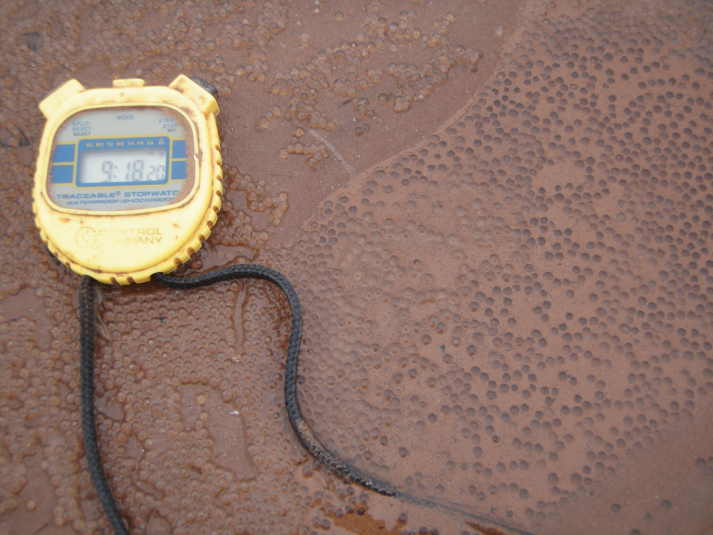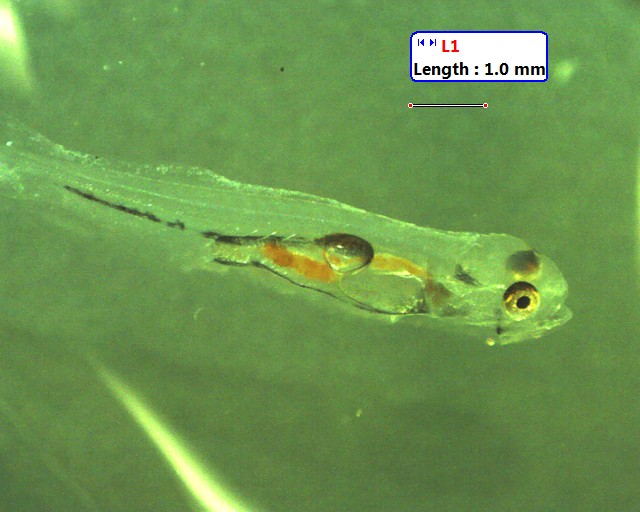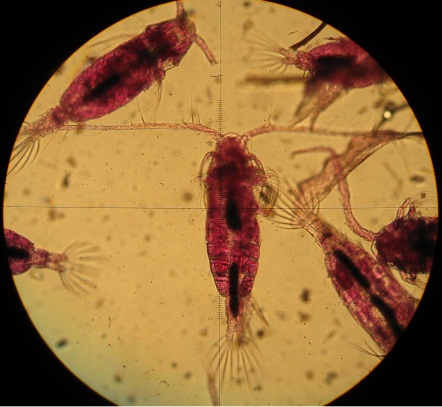Spawning Characteristics
Dr. Jim Duston is from the Dalhousie University Agricultural Campus in Truro, Nova Scotia. This project is funded by Alton Natural Gas Ltd.
An adult female striped bass produces about 500,000 eggs per year, but most die during the delicate egg and larval stages. Gaining a better understanding of how water temperature, rainfall and food availability affect survival of early life stages will help us explain how population size is controlled and predict how good the angling will be in the future.
Objectives
1. Quantify timing of spawning in the Shubenacadie River.
2. Figure out how eggs and larvae are retained in the estuary nursery habitat.
3. Measure growth of young bass from June to September to estimate recruitment.
Results
Spawning from 2008 to 2012 was from mid-May to mid-June. Peaks in egg production coincided with increases in water temperature. Each year egg density peaked over 1000 eggs/m³, indicating the adult population is healthy. Eggs and larvae (< 7mm) were detected over 44 kilometers of the Shubenacadie River, 14 kilometers of the Stewiacke River and 18 kilometers of Cobequid Bay. Their position in the estuary was dictated by the tide and fresh water runoff. Each year growth of first feeding larvae was static for around one month, associated with poor feeding. Thereafter, growth was highly influenced by water temperature, with 2010 and 2012 being good growing seasons and 2008 and 2011 being poor growing seasons, likely leading to very little overwinter survival.

Figure 1. Striped bass eggs stranded on the mud flats (Shubenacadie River).
The Future
Poor growth of larvae at the first feeding stage has been observed consistently each year, and is likely contributing to high mortality of young striped bass. In 2013 the density of copepods (small prey items) during striped bass larvae first feeding stages will be assessed in hopes of shedding some light on this issue.

Figure 2. First feeding stage of striped bass larvae (7 mm).

Figure 3. Copepods (0.3 to 0.5 mm) collected from the Shubenacadie River seen under a microscope.